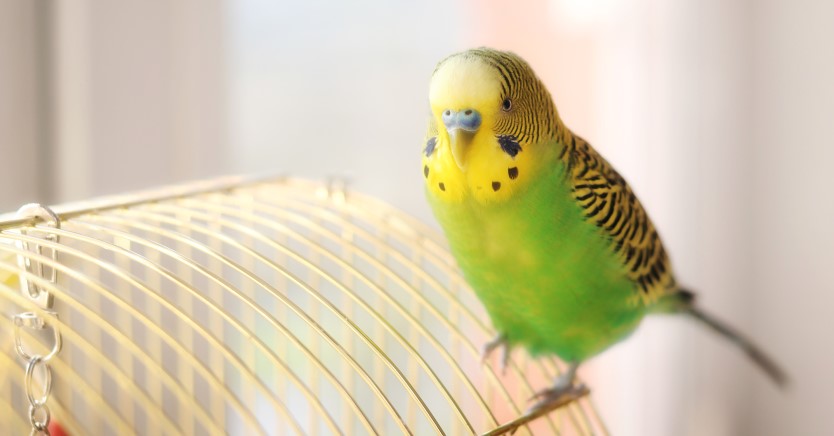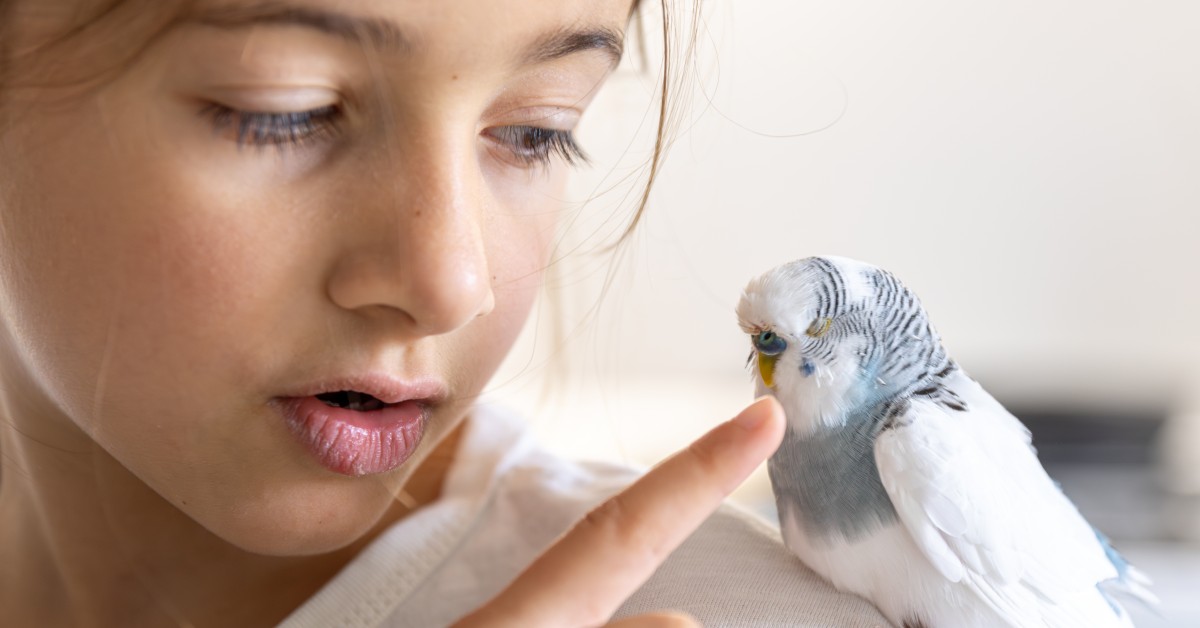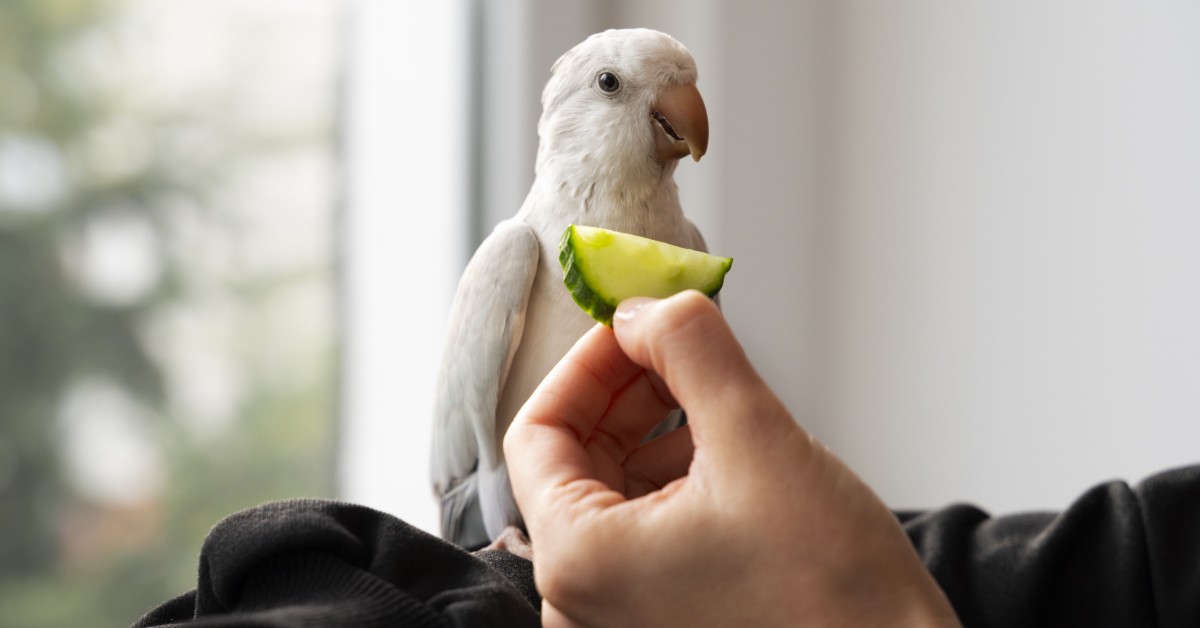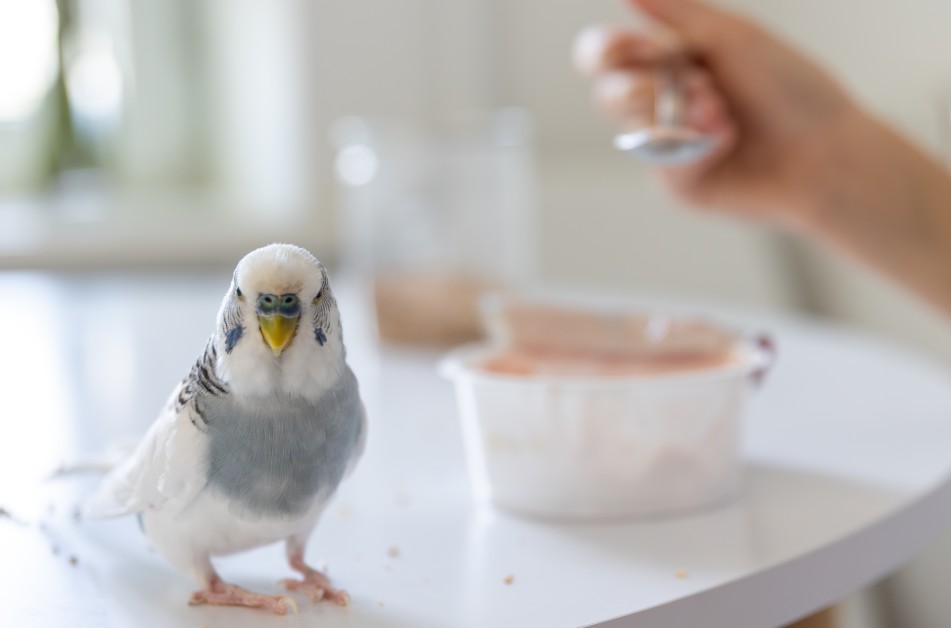I Think My Parakeet Has Mites: What Can I Do?
Parakeets and budgies can fall victim to both internal and external parasites, such as bird mites, which can cause symptoms like scaly skin and itching.

Has your parakeet developed scaly skin, a thickening crust around the cere and bill, constant itching at night, and lethargy during the day?
If so, your pet bird may have mites. It is important to know that even the most well-cared-for budgies can develop a mite infestation. Of course, bird mites don’t spontaneously appear on parakeets. Instead, budgies can develop mites when they come in contact with other infected birds, infected pets in the home, or even humans that may have mites on their skin or clothing.
What Types of Bird Mites Affect Parakeets?
The symptoms that your parakeet exhibits will depend on the type of bird mite. There are several types of bird mites that can affect budgies, including the following:
- Red Mites
Red mites, otherwise known as feather mites, most commonly develop in birds with poor immune systems. A bird with red mites may appear restless, especially at night as mites are nocturnal. They may also appear weak, often due to anemia caused by the mites feeding. Red mites can transmit a variety of diseases, such as E. coli, Newcastle disease, Salmonella, and certain bird flu viruses.
- Scaly Face Mites
Scaly face mites can invade any type of bird but are most common in parakeets. These parasites can tunnel into your bird, leaving behind a scaley, crusty residue. They are known as scaly face mites as they most commonly burrow into the unfeathered areas surrounding the beak and eyes. Scaly face mites can also accumulate around the bird’s vent where they leave droppings.
- Scaly Leg Mites
Scaly leg mites are most common in caged birds and occur when mites burrow into the bird’s flesh. The tunnels formed by these mites result in dermatitis and scaly lesions. If not promptly treated, scaly leg mites can cause your pet budgie to develop a skin infection. Scaly leg mites are very contagious; therefore, all birds that have had contact with one another should be treated regardless of symptoms.
- Air Sac Mites
Parakeets have an organ known as an air sac that pumps inhaled and exhaled air through their lungs, which remain in a static position. When exposed to air sac mites, your pet bird can suffer from an infestation that affects both the air sac and throat. Air sac mites can affect your bird’s ability to be vocal and can quickly deteriorate its feather quality. This type of bird mite is typically transmitted through coughing or sneezing.
What are the Symptoms of Bird Mites?
Bird mites can cause a wide range of symptoms in parakeets, ranging from mild itching to severe deterioration of the tissues. The symptoms that your bird develops will depend on the type of mite infestation.
Symptoms of red mites typically include scratching, especially at night. Your bird may start to lose weight and its feathers may become dull in appearance. Your budgie may also start to pick at its feathers in an attempt to remove the mites. If you suspect that your parakeet may have red mites, place a clean, white sheet over the cage before bed. If you see red specks on the sheet in the morning, it could indicate a red mite infestation.
The most common symptom of scaly face mites is a thickening crust around the bill and cere. As the mites continue to burrow into your bird’s skin, they can also cause pain or discomfort. Over time, these mites can spread to the vent, feet, and legs. If your pet has scaly leg mites, it may begin to lose feathers and possibly develop a skin infection. Birds with this condition commonly experience intense itching.
Air sac mites generally cause respiratory symptoms, such as coughing, sneezing, and difficulty breathing. Your pet bird may start to make a clicking sound or other odd sounds due to the mites entering the air sacs or sinuses.
How Can I Get Rid of My Bird’s Mites?
If you suspect that your pet parakeet has a mite problem, it is important to have it treated immediately. Start by deep cleaning your bird’s cage, as well as wiping, vacuuming, and mopping the surrounding area. Next, give your budgie a bath and remove any visible mites you might see on the skin or feathers. Avoid the use of commercial bird shampoos unless otherwise instructed by your vet.
Once your pet is clean, use a bird mite spray to help kill any mites that may still be on the skin or feathers. There is a range of commercial products available or you can create your own natural solution using household supplies like vinegar. Also, treat the cage with mite spray. Your bird may have irritated skin following a mite infestation. Try to soothe your budgie’s skin with a natural remedy or ask your vet for medication.
If you have never handled a mite infestation before, it is best to see your veterinarian for guidance on treating bird mites. Your vet will perform a thorough examination to determine the extent of the problem and recommend the best solution based on your parakeet’s age, health, and other factors. As your bird is recovering from a mite infestation, it is best to isolate it away from other birds and animals in the home.
Ready to start saving money on pet wellness care?
Then take a look at Mint Wellness, the pet wellness plan that provides fast reimbursement on routine pet care. Save on vaccinations, wellness exams, preventatives, dental, and more!
Learn More


